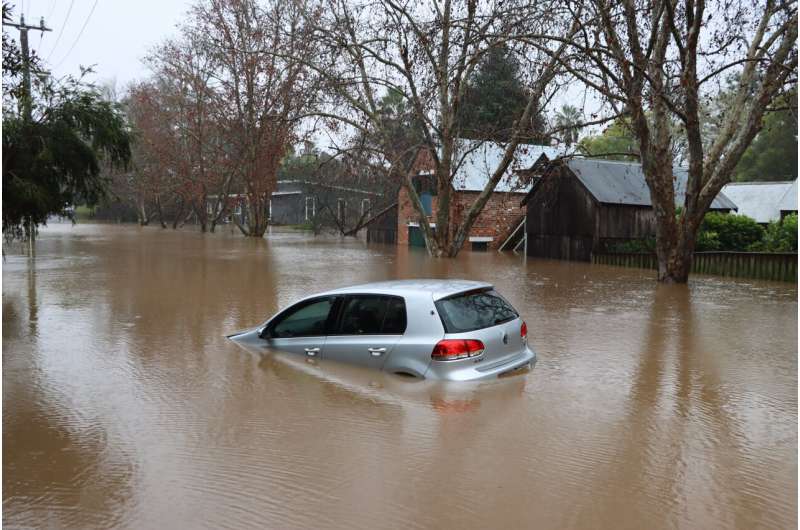What climate vulnerability actually looks like

The imagery of climate change matters. How we perceive the world affects how we perceive climate change, and how it will affect us—or whether it will affect us at all.
Imagery has long been understood as . Climate change is complex, and requires some . Yet, this process of simplification can rely too heavily on existing stereotypes, which can .
Think of climate vulnerability. This term describes who is likely to be negatively affected by climate change. Perceptions of vulnerability are affected by the . However, the images that are chosen also reflect our perceptions of who is vulnerable.
For example, sea level rise is often represented through and ice melt is made emotional through the use of . But which images are most often used to represent human vulnerability to climate change?
Search online for an image of climate victims and you are likely to see a photograph showing a stereotypical image of standing in . Images like this show women and children, usually in Asia or Africa, looking distressed in a way that frames them as victims.
However, when searching by region, images of climate victims can look different. For example, compare the search for "climate victim Asia" and "climate victim UK."
An image of Fuli Khatan, a Bangladeshi flood victim, shows a distraught woman waist-deep in floodwater experiencing a disaster. But another image is very different. It shows Mary Long-Dhonau, a climate victim from the UK whose home has been . She is looking directly at the camera, smiling slightly. She is not portrayed as a victim, but as a campaigner.
The difference in how these women are portrayed is effective in showing how climate vulnerability is understood. For the most part, the climate vulnerable are imagined to be women and children in the global south (developing countries in Africa, Asia and Latin America), due to their .
In other words, the climate vulnerable are portrayed as the same people who are already considered vulnerable.
This framing makes climate change an issue that follows an established pattern of risk. It doesn't seem like a new issue, but rather chalk on the white wall of .
This overlap is partly the result of long-running and deeply embedded power inequalities that have made some people vulnerable in order to .
However, this pattern is overstated and climate vulnerability extends beyond those we already understand as vulnerable. Last month, the European Copernicus climate service declared that 2024 was the first calendar year to pass the symbolic threshold of , as well as the world's hottest on record. Every degree of heating means more people will suffer the effects of climate change.
These images also reflect the dominant understanding in the UK of climate change vulnerability as something that only happens elsewhere—in countries that are already vulnerable.
Climate is an 'us' problem
I've often encountered this issue in my research . My work questions the assumptions of climate change and vulnerability, tracing them back to . For example, the Pacific was described as vulnerable and doomed to not being habitable long before .
At the same time, assumptions of safety are rooted in history. In developed societies, there is a popular narrative that which assumes wealthier people will be better protected by default.
And yet, the UK is .
The UK's rainfall intensity has increased markedly over the past 60 years, . The east coast is being . And the UK government's climate change committee has argued that the UK has .
Also, in an interconnected world, we have already experienced how shocks elsewhere can and . Even if the UK could escape the direct effects of climate change, it would still feel the consequences.
Our perceptions of vulnerability are so entrenched that even climate-related incidences in wealthy countries, like the recent or don't lead to a change in narrative. In fact, climate activists .
Being aware of how images are used to influence our perceptions of vulnerability is an important step in changing the narrative. Climate change is already at levels at which we are all affected. We need to make this clearer.
The UK has an but it also needs to take more steps towards adaptation to the climate change that is already locked in.
Speaking in February 2025, professor of energy and climate change Kevin Anderson described the future of humanity as a range of possibilities that goes from . The higher temperatures are pushed past 1.5°C warming, the truer it is that .
Provided by The Conversation
This article is republished from under a Creative Commons license. Read the .![]()





















